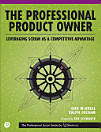Tame, Messy and Wicked Risk Leadership
David Hancock
msi 2017 · Taylor & Francis
E-book
114
Pages
family_home
Éligible
info
reportLes notes et avis ne sont pas vérifiés. En savoir plus
À propos de cet e-book
The general perception amongst most project and risk managers that we can somehow control the future is, says David Hancock, one of the most ill-conceived in risk management. The biggest problem is how to measure risks in terms of their potential likelihood, their possible consequences, their correlation and the public's perception of them. The situation is further complicated by identifying different categories of problem types; Tame problems (straight-forward simple linear causal relationships and can be solved by analytical methods), and 'messes' which have high levels of system complexity and have interrelated or interdependent problems needing to be considered holistically. However, when an overriding social theory or social ethic is not shared the project or risk manager also faces 'wickedness'. Wicked problems are characterised by high levels of behavioural complexity, but what confuses real decision-making is that behavioural and dynamic complexities co-exist and interact in what is known as wicked messes. Tame, Messy and Wicked Risk Leadership will help professionals understand the limitations of the present project and risk management techniques. It introduces the concepts of societal benefit and behavioural risk, and illustrates why project risk has followed a particular path, developing from the basis of engineering, science and mathematics. David Hancock argues for, and offers, complimentary models from the worlds of sociology, philosophy and politics to be added to the risk toolbox, and provides a framework to understand which particular type of problem (tame, messy, wicked or messy and wicked) may confront you and which tools will provide the greatest potential for successful outcomes. Finally he introduces the concept of 'risk leadership' to aid the professional in delivering projects in a world of uncertainty and ambiguity. Anyone who has experienced the pain and blame of projects faced with overruns of time or money, dissatisfied stakeholders or basic failure, will welcome this imaginative reframing of some aspects of risk management. This is a book that has implications for the risk management processes, culture, and outcomes, of large and complex projects of all kinds.
À propos de l'auteur
Dr David Hancock is Head of Construction for the UK Cabinet Office. Previously he was Head of Project Risk for London Underground, part of Transport for London. He has run his own consultancy, and was Director of Risk and Assurance for the London Development Agency (LDA) - under both Ken Livingstone and Boris Johnson's leadership - with responsibilities for risk management activities and audit for all of the Agency's and its partner's programmes. Prior to this for 6 years he was Executive Director with the Halcrow Group, responsible for establishing and expanding the business consultancy group. He has a wide breadth of knowledge in project management and complex projects developed over more than 20 years and extensive experience in opportunity and risk management, with special regard to people and behavioural aspects. He is a board director with Alarm (The National Forum for Risk Management in the Public Sector), a co-director of the managing partners' forum risk panel, member of the programme committee for the Major Projects Association and a visiting Fellow at Cranfield University in their School of Management.
Donner une note à cet e-book
Dites-nous ce que vous en pensez.
Informations sur la lecture
Smartphones et tablettes
Installez l'application Google Play Livres pour Android et iPad ou iPhone. Elle se synchronise automatiquement avec votre compte et vous permet de lire des livres en ligne ou hors connexion, où que vous soyez.
Ordinateurs portables et de bureau
Vous pouvez écouter les livres audio achetés sur Google Play à l'aide du navigateur Web de votre ordinateur.
Liseuses et autres appareils
Pour lire sur des appareils e-Ink, comme les liseuses Kobo, vous devez télécharger un fichier et le transférer sur l'appareil en question. Suivez les instructions détaillées du Centre d'aide pour transférer les fichiers sur les liseuses compatibles.








